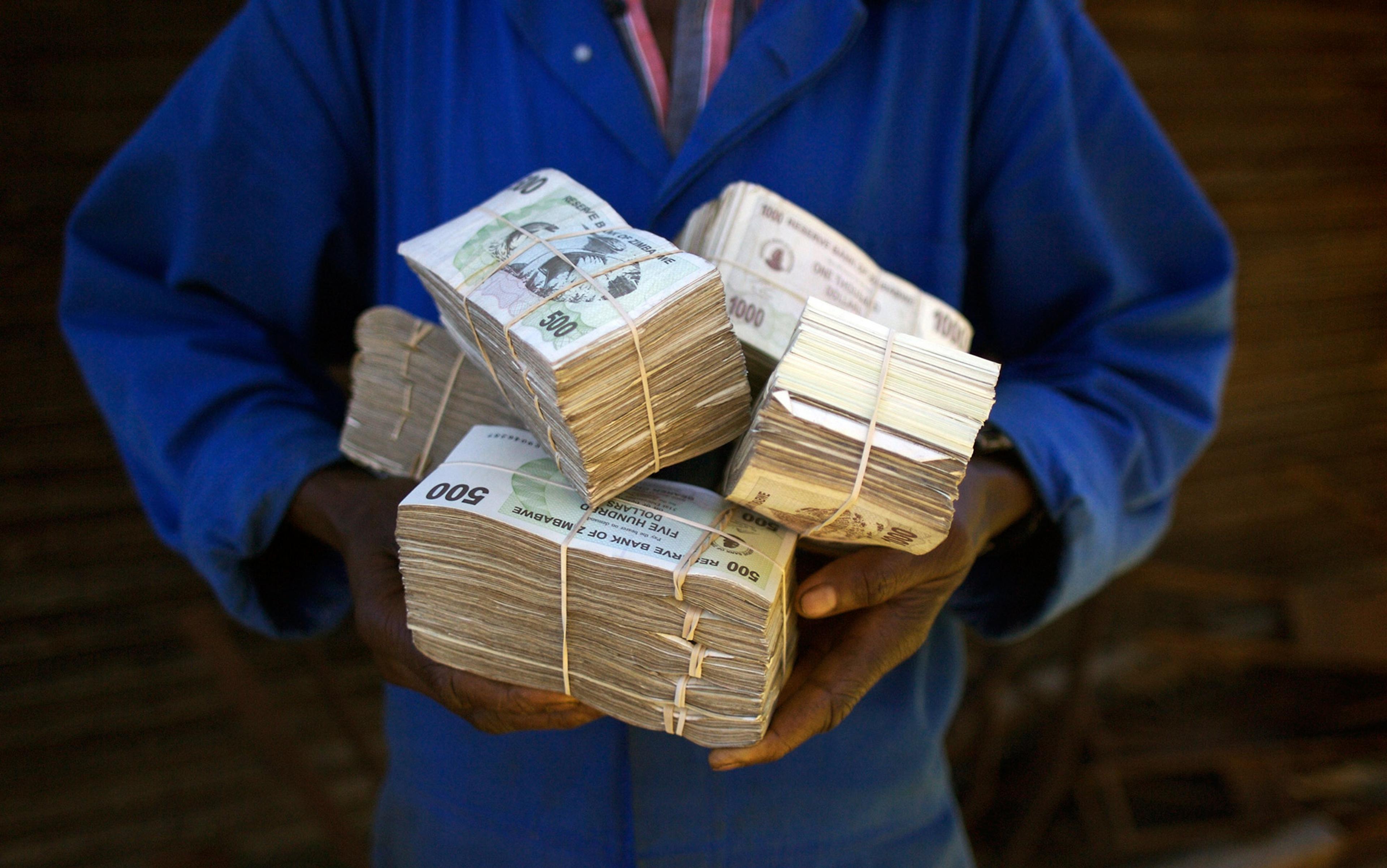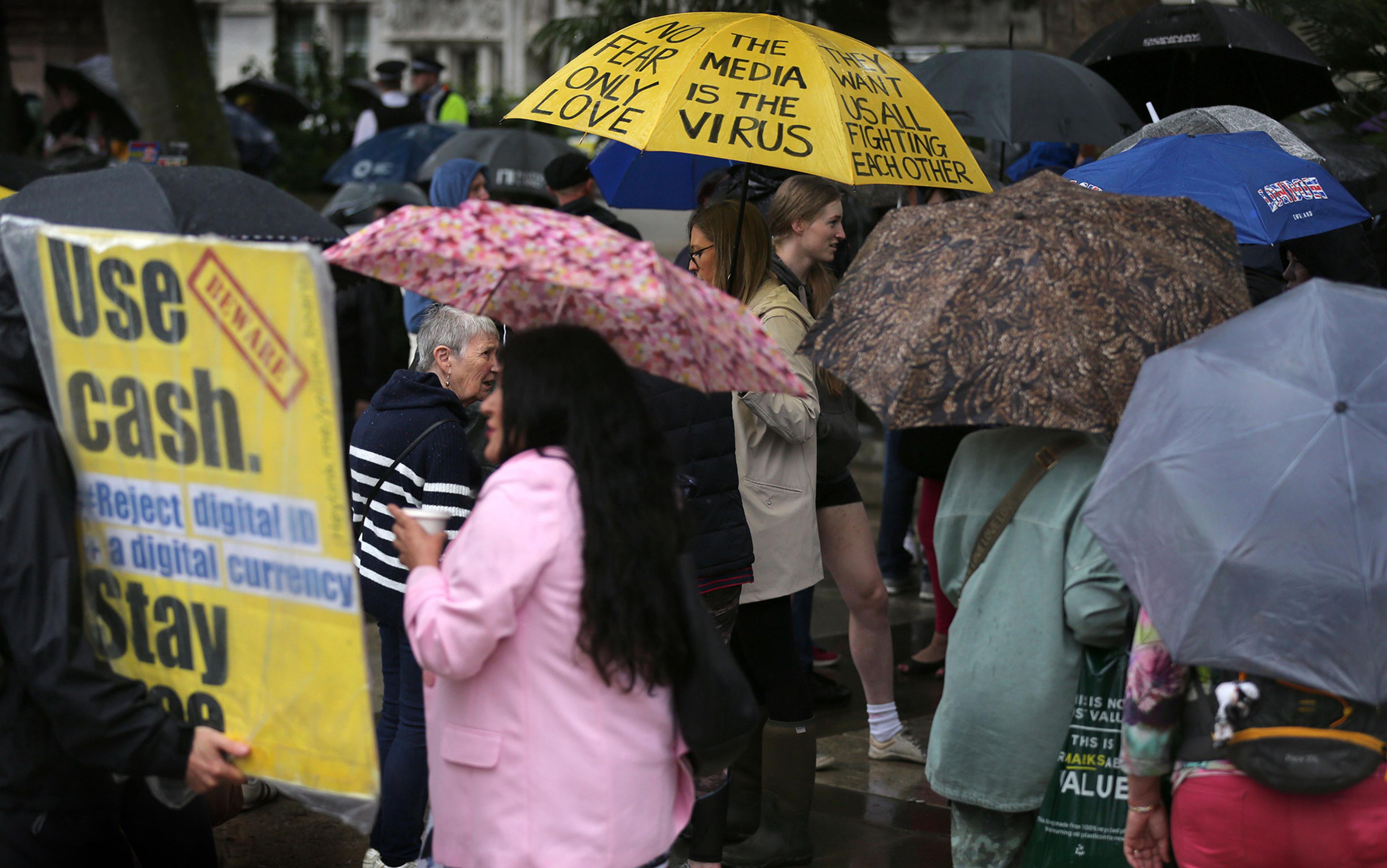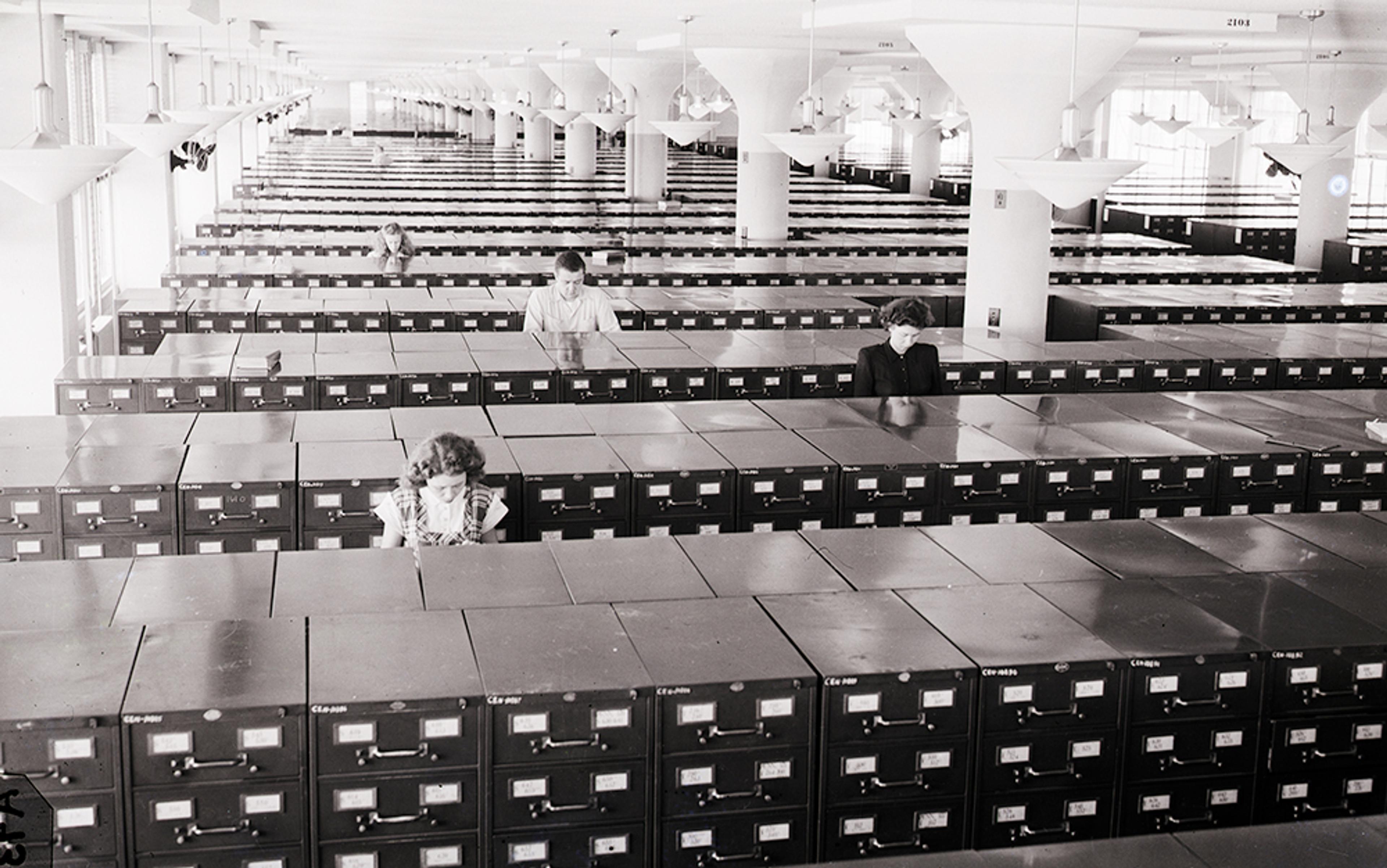I don’t have much money. Then again, I couldn’t say exactly how much I do have. In the Co‑operative Bank’s IT system is a database entry that says I have £97 in electronic money. In my wallet I have three £10 notes, pieces of paper with pictures of the Queen on them, issued by the Bank of England, promising me £30. I have six pieces of metal, too — copper-nickel alloy and nickel-plated steel, to be exact — valued at 59 pence in total. So that’s £127.59.
My wallet also contains a £5 Brixton Pound note — a local currency found only in the south London neighbourhood where I live — which I got as change from a local bar called Kaff. On my mobile phone is a series of text messages telling me that I have B£39.61 on my online Brixton Pound account. This is electronic money stored in a database, sent to me by local residents to pay for copies of a book I wrote. If I open my computer, there is a programme called MultiBit that connects to a distributed computer file called the blockchain. It contains a record that says I have 3.8462 BTC — or bitcoins: I earned them selling the book to people in Israel, the USA, Sweden, the Netherlands, Switzerland and New Zealand via an exchange called BitPay.
That’s not all. I have a Totnes Pound, 20 South African rand, and a couple of hours saved up on a timebanking platform. It’s possible that I have other money, too — but that depends on what you mean by ‘money’. The authorities have their own view of what counts as legal tender, or ‘real’ money but, even so, the definition has been controversial since antiquity. One of the most interesting sections in the British Museum is a display of counterfeit coins — not ‘real’ according to the powers that be, but frequently real enough to the people who used them.
I, too, was once a counterfeit of sorts. A left-wing chancer with a background in anthropology, I immersed myself for two years in the financial sector, styling myself as whatever a derivatives broker is supposed to be. I wanted to uncover what exactly goes on in networks of power, to experience those dynamics first-hand, like a kind of gonzo journalist. For the most part, the work involved trying to peddle giant bets — known as swaps and options contracts — to various investors, banks and corporations. In the process of doing it, though, I stopped being a counterfeit and started becoming a real broker, internalising the cultural codes of high finance. I was thrown out in 2010, and ever since then I’ve been fascinated with developing other ways in which one might go about exploring, rewiring and playing with the financial system.
How can a piece of paper store 10 pounds of value? What are pounds anyway?
The trouble is, while my experiences in mainstream finance taught me a lot about what the industry does, they only gave me glimpses into the nature of the mysterious stuff it does it with. The financial system exists, above all, to mediate flows of money, not to question what money is. Investment banks create financial instruments that steer money from one place to another, with built-in sub-conduits to siphon it back — extractive devices used by investors. To draw an analogy with computer coding, we might say that financial instruments are analogous to ‘high-level’ programming languages such as Java or Ruby: they let you string commands together in order to perform certain actions. You want to get resources from A to B over time? Well, we can program a financial instrument to do that for you.
By contrast, money itself is more like a low-level programming language, very hard to see or to understand but closer to gritty reality. It’s like your computer’s machine code, interfacing with the hardware: even the experts take it for granted. You might need to explain to someone what a bond is, but nobody is ever ‘taught’ what money is. We just see it in action and learn how to use it. Indeed, the only way you ever tend to get a glimpse of it is in relief, by contrast with another programming language — or when you’re forced to build it again from scratch.
Most people never get this opportunity. If you had to ask the average person in the financial industry to explain what money is, they’d probably rattle off the economics textbook description: ‘a means of exchange, a unit of account, and store of value’. This is not a very helpful definition. How can a piece of paper store 10 pounds of value? What are pounds anyway? Money sounds like it’s an ordinary noun, a self-contained object. If it is a physical object, it must be paper or metal or digits on a computer. And yet, very few of us think a £5 note is merely a piece of paper: the same idea of £5 can be expressed in electronic or metal form, after all.
No, to delve deeper into the nature of exchange we need some first principles, and these take time to uncover. The best guides in this half-lit territory turn out to be not economists, but rather the loose bands of monetary mystics and iconoclasts who are developing strange new exchange technologies. They are a scattered tribe, with elders including the likes of Bernard Lietaer, Ellen Brown and Thomas Greco, sages passing on tips on how to breach the Monetary Matrix. I find myself sitting in a pub in Stockwell, south London, with Matthew Slater, a nomadic developer of open-source currency systems, and discover that he no longer bothers with a bank account or a fixed address. ‘Once you’ve broken through appearances,’ he says, ‘there’s no going back.’
I was introduced to Slater by a common friend named Jem Bendell. The two of them met in an Indian hippy colony called Auroville in Tamil Nadu, and Bendell is now a professor of sustainability leadership at the University of Cumbria and an undercover monetary revolutionary. I have an enduring memory of a TED talk in which he ripped a banknote into pieces, trying to make the point that the paper itself doesn’t have value. Everyone in the room winced, as if to say: ‘You could have given that to me!’, but Bendell was getting at a powerful idea.
If money is an object, it must be an enchanted one, charged up with value by a subtle cultural process. Why else would anyone exchange a box of coffee for a rectangle of paper? Shopkeepers accept the paper because they believe that it has abstract value — because, in turn, they believe that others believe it, too. The value is circular, predicated on each person believing that others believe in it. You hand over your money and claim something from the shopkeeper, almost as if the coffee were owed to you. Then they take the claim that was previously yours and use it to claim something from someone else. We all trust each other to value money — but this still means that every monetary transaction is a leap of faith. And faith has to be carefully maintained.
The idea that money rests on belief makes some people uncomfortable. There’s a popular assumption that money emerged, in some dimly imagined past, out of barter — that it was just a more precise means to make direct exchanges. Mainstream economists still trot out this explanation, although anthropologists such as David Graeber have shown that there is little evidence for it. It’s a reassuring myth, one that obscures the deep difference between barter and monetary exchange. In the former, nothing is left unresolved and no faith is required. It’s a closed circuit, a like-for-like swap. By contrast, money transactions are never closed; you pass on an abstract, faith-based claim in exchange for a tangible good. At any given moment, the economy consists of only a limited number of actual goods and services, which people attempt to claim with money. If there are too many claims floating about, then the underlying value allocated to each one must decrease. This is what we call inflation, and it is a source of permanent anxiety in monetary communities. Which brings us to our first major psychological lever for maintaining faith in money: how the money is created.
Banknotes in the early 19th-century US often used to trade at a discount to metal coins. People distrusted them, and the ability of those who controlled their production to make as many as they wanted; there was something comforting about the hard metallic certainty of coins and their obvious connection to scarce metals. Remnants of this mentality are still found in ‘goldbugs’ and ‘sound money’ advocates, people who think that gold and other precious metals have an intrinsic value lacking in government-backed electronic or paper money. When central banks issue more money (which commercial banks subsequently amplify via fractional reserve banking), the goldbugs shout: ‘Can’t you all see that government money is madness! Run to gold!’
It’s the dissidents who seem mad, while the people swapping useful goods for bits of metal, paper or meaningless electronic data look perfectly sane
But gold is no more intrinsically valuable than official government money. It fails the desert island test of value: would you want it if you were stranded alone somewhere remote? All it really has is beauty and scarcity, plus an ancient cultural link with the idea of currency. Gold reveals the basic tension in the textbook definition of money — the idea that it can be both a store of value and a means of exchange. For the most part, when something is truly valuable in itself, people are disinclined to part with it (why swap rum for something else when you can just drink it?). The monetary enchantment appears to work best when its tokens merely appear valuable, while containing no true value. That’s how you convince people both to accept them and to give them away, rather than consuming them.
And so the second trick to making money believable depends on how it appears. The British Museum is full of the kind of shiny trinkets with which vainglorious monarchs liked to parade around — a whole aspirational structure imprinted into useless metals and cowrie shells. Seashells and golden baubles like these are excellently suited for widespread exchange: you might not be able to do much with them, but they’re easy enough to keep and powerful people appear to collect them, which is good enough for most of us. Do such artefacts ‘store’ value? Of course not. That’s just a socially sanctioned pretence, a pragmatic, covert, wink-wink, let’s-not-talk-about-this charade. Nevertheless, over time, the fantasy becomes such a deep habit that no one person can stand up and point out the absurdity of the situation. At that point, it’s the dissidents who seem mad, while the people swapping useful goods for bits of metal, paper or meaningless electronic data look perfectly sane.
This gives us our third major psychological prop to the monetary faith: what are the sanctions for not using it? If enough people believe in it, you will lose out if you don’t follow suit. Similar network effects arise with social platforms such as Facebook — in theory, you can opt out, but only if you don’t mind the penalty of social exclusion. What’s more, when integrated into a national legal system and backed by the threat of violence, the sanctions for dissent become rather persuasive. At the unsubtle end of the spectrum, the monarch may simply throw you in jail for not using her preferred currency.
Still, as the government of Zimbabwe learnt the hard way, you cannot order people to believe in money if the underlying story isn’t convincing enough. In 2008, cultural belief in the Zimbabwe dollar began to evaporate (a process euphemistically known as ‘hyperinflation’). The underlying economic activity in the country — based largely on agriculture — was falling into disarray. Despite strenuous attempts at coercion, the government was eventually forced to turn to ‘hard’ foreign currencies, more convincingly backed by robust economies. By 2009, the process of disenchantment was complete: the Zimbabwe dollar was dead. A newspaper called The Zimbabwean started running ads printed on the old notes, saying: ‘It’s cheaper to print this on money than paper.’
Money is a complex cultural technology. Sometimes it breaks down, but that just gives us all the more reason to tinker with its blueprints. Each new system, though, will have its own psychological side effects and trade-offs. We know what mainstream currencies such as the US dollar are good for: overcoming barriers between buyers and sellers who don’t particularly know or trust each other. The trouble is, by reducing the need for personal trust relationships, mainstream money encourages social atomisation, to the point where arms-length purchasing starts to seem like the only valid kind of transaction. Look at the obsession economists have with measuring gross domestic product in monetary terms. GDP is supposed to reflect what is created in society, but if my grandad builds me a table in his workshop, it’s not included in GDP, and if I buy a table in Ikea, it is. The former is not considered valid production, whereas the latter is. That is arbitrary, and obviously something has gone wrong.
The problem might be that mainstream money is simply too efficient. It numbs people into forgetting that it’s a socially pragmatic delusion, and so we take it for granted, just as we take oxygen for granted. But oxygen is vital for our survival, whereas money is only an intermediary tool, cushioning us from the base-level economic production that actually sustains us. There’s an ecological dimension to this, of course, which is my overriding concern. Our ability to exchange without knowing where things come from blinds us to the real core of the economy: not money, but the physical things we must wrench from the ground by human effort, which is underpinned by agricultural systems, and energised by sunlight, water and soil.
The more we abstract and fetishise money as a thing in itself, the more we lose sight of its sources and its goals. We get confused, and feel disempowered relative to those who wield larger flows of it. Sealed off from inquiry in its hermetic shell, money distorts our perceptions of one another. We can’t seem to remember that it is merely one means of exchange among many. What energies would we unleash if we were to break open that opaque shell and split the monetary atom?
The recording of the transaction in the cloud appears as nothing more than a series of numbers on my computer, yet there I am, putting the physical book in the post
I don’t suggest that we start suspiciously eying the change handed back to us in shops. Coins are designed to be symbolic and abstract, and perhaps that’s required. What we need though, is the right kind of doublethink, a carefully managed form of cognitive dissonance that allows us to see the centuries of real technological change that lie behind them, the oil and dirt and oceanic dragnets, the limestone blast furnaces and neon lighting systems and chemicals synthesised from fossilised trees. Perhaps we can tinker with the word ‘money’ itself. It’s a mass noun, like you’d use for some kind of tangible substance, and it makes money sound like a ‘thing-in-itself’. As a kind of mental discipline, I prefer to use a different word: COGAS. It stands for ‘claims on goods and services’, which is all money really is. And now I have a word that describes itself, as opposed to one that actively hides its own reality. It sounds trivial, but the linguistic process works a subtle psychological loop, referring money to the world outside itself. It’s a simple way to start peeling back the façade.
To go deeper, we need to start actually experimenting with alternatives. Money, we know, is a technology, and it can be designed for different purposes — always for exchange, of course, but with auxiliary characteristics. To uncover and experience these characteristics, I actively play around with as many esoteric currencies as possible. For example, I’ve sold 17 copies of my book with Bitcoin, an electronic ‘crypto-currency’ that captured the public imagination earlier this year. It’s is a fascinating experiment, and one of the first alternative currencies to reach any significant scale without the help of legal backing.
Friends got involved with Bitcoin a few years ago when it still seemed almost entirely ethereal. They talked a lot about Bitcoin’s elegant and robust design, but in my opinion, it got much of its initial boost simply because it seemed so cool, rebellious, mysterious and novel. To my eye, it has a certain offbeat, grimy digital aesthetic, like electronic graffiti. Now, as more people enter the scene, Bitcoin is solidifying into a monetary reality. An entire community has grown up around digital signatures, imbuing them with imagined value, giving the currency a life of its own that eventually extends far beyond the initial in-group. If doubt can destroy a currency, then a cultlike process of evangelical faith-building can create one.
Bitcoin has one very interesting attribute and, to understand it, we should look to the theoretical disagreement between the Enlightenment political philosophers Thomas Hobbes and Jean-Jacques Rousseau. Hobbes was a pessimist. In order to escape the ‘war of all against all’ that he believed was the natural state of human existence, he thought that individuals ought to submit to the will of a central sovereign who could act as arbitrator in disputes. We’ve traditionally associated this with political authoritarianism, but it also serves quite well as a description of mainstream money. Most of our money nowadays is electronic, ‘stored’ in an oligopoly of private banks that are themselves connected via a central bank. We rely on these institutions to keep an accurate score of our electronic money. Brett has £97, they say. Trust us, we have it recorded in our IT database.
Rousseau had the radical idea that Hobbes’s arbitrator needn’t be a single dictator or oligarchy. Instead, it could be the collective, or the general will. So it goes with Bitcoin. In place of a centralised, hierarchical group of banks keeping score of the money, a decentralised network of individuals records every transaction on a virtual ledger called the blockchain. Brett has 3.8462 BTC, the network says. We’ve collectively kept score of that. In this scenario, my ‘account balance’ is less like the ruling of a sovereign and more like the result of a popular democratic vote, mediated via a computer network.
In normal, bank-mediated electronic transactions, someone tells their bank to send money to your bank and then the banks edit the buyer’s and seller’s account balances to reflect the transaction. It’s a strange feeling, then, to accept an electronic payment with no banks involved, then pack a book into a parcel and write an address in America on it simply because someone announced to a network of strangers that they had paid me. The recording of the transaction in the cloud appears as nothing more than a series of numbers on my computer, yet there I am, putting the physical book in the post.
Why do I do it? I accept bitcoins for the same reason that I accept normal money. Mainstream money is used to replace a specific trust relationship with a general one. I take British pounds from a specific person because I trust that I can exchange those pounds for something else within the general British pound-using community. Likewise, I take the bitcoins from the specific buyer because I trust that the broader Bitcoin community will accept them from me in exchange for something of intrinsic value. The main departure from normal electronic money is that Bitcoin uses a decentralised network in place of a central hierarchy. The advantages are anonymity, a sense of freedom and, it has been argued, a more resilient system.
Indeed, Bitcoin has become especially popular with libertarian anarcho-capitalists because its supply is regulated, not by the government or the private banking oligarchy but by ‘apolitical’ mathematical protocols. Theoretically, anyone can make new ones, but it’s a very time-consuming technical process and the operation can only ever be performed a finite number of times, a bit like gold mining. For this reason, bitcoins are naturally scarce. Inevitably, Bitcoin evangelists often fall into the trap of thinking that the value of their favoured currency must somehow be more ‘real’ than that of government-backed money, just like goldbugs do. In fact, all it means is that one form of monetary faith has replaced another.
If digital currencies such as Bitcoin attempt to spread exchange to a global level, local currencies aim to concentrate economic energy into a small space. My Brixton Pounds, and other local currencies, such as the Bristol Pound and the Toronto Dollar, are only redeemable within local neighbourhoods. Where Bitcoin seeks to attack the centralising tendency of a nation state, the Brixton Pound is a (gentle) attack on structures that undermine local community resilience.
Part of the essence of the Brixton Pound is its deliberate inconvenience. We’re used to thinking that absence of friction must be a virtue in any transaction, but a local economy thrives on inconvenience. Chance encounters in the street market help to bind a community together and give it richness of character. We lose all that when we opt for the robotic mediocrity of the automatic till and debit-card reader. It’s a fine balance, of course, and the Brixton Pound recently added a pay-by-text system that combines the ease of electronic payment with the richness of local exchange. I still have to hand-deliver the books I sell that way — knocking on the door of a guy called Rico who writes a food blog, having a chat, getting to know someone I didn’t know before. The inconvenience is where the connection comes in. Who knows? Maybe that apparently ‘inefficient’ method of hand-delivery could lead to a productive new relationship. Hey Rico, I need someone to cater an event, can you help me out? Extreme efficiency of exchange, in other words, might come at the cost of developing new business contacts.
Then there’s my friend Matthew Slater, who has developed an open-source software package that allows you to start a whole range of different currencies. Would you like it time-based, commodity-based, mutual credit, or fiat? His package can do it all. It’s like a Swiss army knife of options. In this, perhaps we can see one vision for the future of money — a future based on diversity, where we can move in and out of exchange technologies as we need. And perhaps only a handful of different monetary systems are required. Local currencies such as the Brixton Pound are about localising, whereas digital currencies such as Bitcoin are about decentralising and internationalising. Meanwhile, so-called demurrage currencies — deliberately engineered to lose value over time — are about energising the volume of transactions, as people have no incentive to hoard them. Freicoin, for example, is an attempt to create a demurrage version of Bitcoin, neutralising the hoarding impulse built into Bitcoin’s psychological structure. Then there are timebanks — community systems where people directly exchange labour time, which is about humanising and reconnecting exchange.
Increasing the diversity of monetary technologies doesn’t only have the potential to create more resilient economies. It is also empowering. Perceiving a choice (especially when it is limited) is generally a good thing, leading to richer, more self-directed experience: I have chosen to use this technology of exchange for this particular purpose. The alternative is unconscious acceptance of a dominant monoculture — one that, even if it is stable, is psychologically destructive (or, at the very least, dull).
I have fewer Brixton COGASs now than when I started this article, fewer claims on goods and services. I drank three coffees in Kaff, claiming them by B£ text message, and the caffeine has sent my thoughts spiralling in all directions. For example, it’s all very well having these alternative currencies, but perhaps what I need is a Brixton Pound savings account, a way to pass on my stored up B£ to someone else who might use them. I need higher-level programming. Imagine financial instruments and micro-investment banks situated in a local community, steering local currencies into local projects via Brixton bonds and community shares. And think of this: young people from the local area could run it. Screw Cityboys when we can have inner-city boys.
The micro-investment banking revolution will come in due course. And who knows, maybe one day even ordinary bankers will understand the nature of the money they so confidently claim to control. They’re behind the curve though. It’s the monetary mystics who are on the cusp of a wave. In my in-box is a message from Eli Gothill, the designer of the Twitter gift currency #PunkMoney. He tells me about a peer-to-peer payments system called Ripple. It could be the next big thing, he says. I sign up and receive 1000 free Ripples, and I have no idea what that means.






